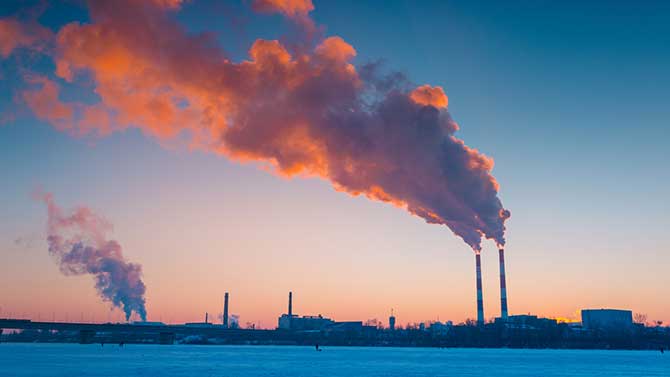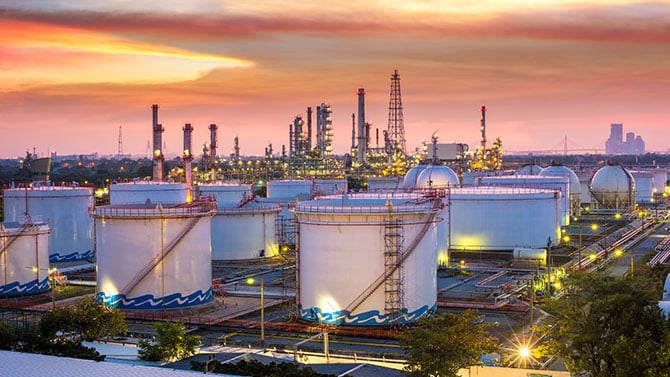

EU Fit for 55: EP adopts EU ETS and CBAM in rebound
After renegotiation, the European Parliament adopted the Revision of EU ETS, CBAM and Social Climate Fund. Next is negotiation with the Council.
An important part of the ‘Fit for 55 package’ is the European Union Carbon Border Adjustment Mechanism (‘CBAM’). The CBAM is a levy on the importation of certain goods (iron, steel, cement, aluminium, fertilisers, electricity, hydrogen as well as indirect emissions under certain conditions) into the EU and is aimed to better reflect the embedded carbon emissions resulting from the production of the goods alongside the EU ETS.
With publication of the CBAM Regulation in the Official Journal of the EU on 16 May 2023, it will enter into effect from 1 October 2023. This initiates a transition period between 2023 and the end of 2025, followed by a phase in period (at the same time the free allowances under the EU ETS are phased out) until 31 December 2033 and full entry into force as of 2034. During the transition period the CBAM mechanism only applies as a reporting obligation for the declarant without the tax being due.


The role of the CBAM is to address the risk of carbon leakage and to reinforce the EU ETS. It is designed to ultimately replace the existing free allowances mechanism applied in the EU ETS. The current EU ETS contains substantive free allowances which are meant to safeguard competitiveness of EU industry and to avoid carbon leakage.That system has been effective in addressing the risk of leakage but it also dampens the incentive to invest in greener production. In the proposal for a revised ETS, however, the number of free allowances for all sectors will decline over time so that the ETS should have more impact in fulfilling the EU's climate goals. Without accompanying measures this would mean that the risk of carbon leakage would increase. To address this increasing risk of carbon leakage in a different way, the CBAM is introduced, which aims to ensure equivalent carbon pricing between imports and domestic products.
The CBAM takes the form of an EU Regulation aimed to ensure direct applicability of a number of provisions concerning goods imported in the Customs Union. In addition, an EU regulation requires uniform and consistent application and enforcement throughout the Union’s Member States. In practical terms, the CBAM Regulation is directly applicable and binding for all EU Member States as of the entry into force on 1 October 2023, i.e. no local legislation of the CBAM is needed in the various EU Member States for it to apply.
Article 192(1) of the Treaty on the Functioning of the European Union (‘TFEU’) serves as the legal basis of the CBAM proposal. In accordance with Articles 191 and 192(1) TFEU, the EU shall contribute to the pursuit, inter alia, of the following objectives: preserving, protecting and improving the quality of the environment, promoting measures at international level to deal with regional or worldwide environmental problems, and in particular combating climate change.
The initial entry into force of the CBAM is 1 October 2023.
Before full entry into force, a transition period will apply, during which the importer is required to report on the import of the goods which are in scope. The transition period starts on 1 October 2023. The length of the transition period and the full phase in of the CBAM will be linked to the phasing out of the free allowances under the ETS, so to alleviate trade competition concerns raised by the World Trade Organization (WTO).
The transitional period will last until the end of 2025. The phase out of free emission rights then starts in 2026 with 97.5% (i.e. a 2.5% reduction) reduction) and reaches 0% of free emission rights (i.e. 100% reduction) in 2034. So full entry into force is now expected for 2034.
The CBAM is a levy calculated by reference to the Greenhouse gas emissions embedded in iron and steel, cement, fertilisers, aluminium, electricity and hydrogen, some precursors and a limited number of downstream products (the exact goods currently in scope are listed in an Annex to the CBAM Regulation) as imported into the EU Customs Union.
Import of the goods in scope can only be done by a declarant authorised by either the national competent authority (based on the original proposal) or the CBAM authority (based on the negotiation position of the EU Parliament).
In general, the import levy will be based on the actual emissions embedded in the imported goods. When actual emissions cannot be adequately determined, the embedded emissions may also be determined by reference to default values. Under the CBAM, similar as under the EU ETS system, a certificate per tonne CO2 emitted (‘CBAM certificate’) during the production of the goods in scope has to be surrendered. The CBAM certificates form their own pool of certificates, outside the EU ETS pool. The price of the CBAM certificates will be calculated as the average of the closing prices of all auctions of EU ETS allowances conducted in auctioning platforms during each calendar week.
In contrast to the EU ETS, the CBAM certificates cannot be traded through a system of auctions, nor will the CBAM establish quantitative limits to import, so as to ensure that trade flows are not restricted. Moreover, while the EU ETS applies to installations based in the Union, the CBAM should be applied to goods imported into the customs territory of the Union.
The CBAM authority shall, on request by an authorised declarant, re-purchase the excess of CBAM certificates remaining on the account of the declarant. The request to re-purchase shall be submitted by 30 June of each year when CBAM certificates were surrendered.

The CBAM applies to goods originating in countries outside the CBAM territory (i.e. EU Member States, Iceland, Norway, Liechtenstein and Switzerland as well as a number of small territories /exclaves such as Büsingen, Heligoland, Livigno, Ceuta, Melilla). In this respect, the non-preferential rules of origin from EU customs legislation determine whether or not the goods originate in a third country. In short, this means that goods obtain the origin of the country where they are wholly obtained, or in case the production involves more than one country, originate in the country where they underwent their last, substantial stage of manufacturing.
The CBAM applies to goods that are considered to have a high risk of carbon leakage and carbon emissions. Per the CBAM regulation these are iron and steel, cement, fertilisers, aluminium, electricity and hydrogen, some precursors and a limited number of downstream products. These goods are further specified in sub-categories with corresponding CN codes (commodity codes) as used within the Customs Tariff. The CN codes not only refer to raw materials but also to certain semi-finished goods (e.g. railways, cans, pipes, structures of prefabricated buildings, tanks, containers, rack rails, aluminium foil, aluminium plates, etc.). Other non-predefined semi-finished goods and finished goods are not yet in scope. The European Commission has the powers to broaden the goods in scope and to expand/limit the countries in scope.
Before the end of the transition period, the Commission will assess whether to extend the scope to other goods at risk of carbon leakage, including organic chemicals and polymers, with the goal to include all goods covered by the EU ETS by 2030.
The emissions that are in scope are the (direct and under certain conditions indirect) ‘emissions’ of greenhouse gases from the production process of goods of which the producer has direct control. The Commission will assess the methodology for indirect emissions and the possibility to include more downstream products before the end of the transition period.
The CBAM Regulation takes into account the customs processes inward and outward processing. In case a product is produced in the EU applying the suspension regime inward processing and this production process uses goods that are in scope of the CBAM, a CBAM levy will be applicable if after production the final product will be imported into the EU by filling an import declaration for free circulation. In line with the inward processing regime the CBAM will take the raw material going into the production as a basis. So also in case the processed product itself is not in scope for the CBAM, the raw material entering the process may and that will be monitored upon importation.
In case the customs procedure outward processing is used and the processed product that returns to the EU is in scope for the CBAM, the CBAM only applies for the emissions of the processing operation in the third country.
By the end of 2027, the Commission will do a complete review of CBAM including an assessment of progress made in international negotiations on climate change, as well as the impact on imports from developing countries, in particular the least developed countries (LDCs).
By 31 May of each year, each authorised declarant shall submit a declaration (‘CBAM declaration’), for the calendar year preceding the declaration, to the competent authority. This will be on 31 May 2027 for the first time for the year 2026. The CBAM declaration shall contain:
At this same date the authorised declarant needs to surrender a number of CBAM certificates to the competent authority that corresponds to the embedded emissions. The authorised declarant shall ensure that the required number of CBAM certificates is available on its account in the national registry. If this is not the case, the competent authority will request the surrender of the missing CBAM certificates within one month.
In addition, the authorised declarant shall ensure that the number of CBAM certificates on its account in the national registry at the end of each quarter corresponds to at least 80 per cent of the embedded emissions.
The competent authority of each Member State shall, on request by a declarant authorised in that Member State, re-purchase the excess of CBAM certificates remaining on the account of the declarant in the national registry after the certificates have been surrendered. The request to re-purchase shall be submitted by 30 June of each year when CBAM certificates were surrendered. The number of certificates subject to re-purchase shall be limited to one third of the total CBAM certificates purchased by the authorised declarant during the previous calendar year. The re-purchase price for each CBAM certificate shall be the price paid by the authorised declarant for that certificate at the time of purchase.
By 30 June of each year, the competent authority of each Member State shall cancel any CBAM certificates that were purchased during the year before the previous calendar year and that remained in the accounts in the national registry of the declarants authorised in that Member State.
An authorised declarant may claim in its CBAM declaration a reduction in the number of CBAM certificates to be surrendered in order for the carbon price paid in the country of origin for the declared embedded emissions to be taken into account.
During the transitional period, the CBAM mechanism will only apply as a reporting obligation for the declarant without the tax being due. Under this system, the declarant needs to report each quarter to the CBAM authority the total quantity of goods imported in that quarter including the amount of directly and indirectly embedded emissions in the goods and the carbon price due in the country of origin.
An authorised declarant who fails to surrender, by 31 May of each year, a number of CBAM certificates corresponding to the emissions embedded in goods imported during the previous year shall be liable to a penalty identical to the excess emissions penalty in the year of importation of the goods, for each CBAM certificate that the authorised declarant should have surrendered.
The European Commission acknowledges that reaching out to third countries would be important with regard to the understanding of and compliance with CBAM requirements. Moreover, the EU will engage with third countries whose trade to the EU is affected by this Regulation to explore possibilities for dialogue and cooperation with regard to the implementation of specific elements of the Mechanism. It should also explore possibilities for concluding agreements to take into account their carbon pricing mechanism. Agreements with third countries could be considered as an alternative to the application of CBAM in case they ensure a higher degree of effectiveness and ambition to achieve decarbonisation of a sector.

After formal adoption by the EU Parliament on 18 April 2023 and the Council of the EU on 25 April 2023, the CBAM Regulation was published in the EU Official Journal on 16 May 2023. The first formal (administrative) obligations commence on 1 October 2023.
This regulation will have a significant impact on a wide variety of internationally operating businesses. Hence, important next steps for companies importing (or relying on the importation of) any of the goods in scope of CBAM (or expected to become in scope of CBAM) is to understand the potential impact of the costs of CBAM on their supply chain and value chain. It is furthermore essential to make sure the correct formalities are taken into account to be able to arrange for a smooth import of goods at the EU border complying with the CBAM to avoid potential penalties. The provisional agreement gives impacted industries further guidance on what to expect. The goods in scope will become reportable from 1 October 2023, and as such, companies will need to consider how to accurately and efficiently determine the ‘embedded emissions’ from the production of certain goods acquired from outside of the EU. It is probably necessary to undertake work on this with a group of stakeholders coming from various departments in your company.


After renegotiation, the European Parliament adopted the Revision of EU ETS, CBAM and Social Climate Fund. Next is negotiation with the Council.


The European Parliament needs to renegotiate the Revision of EU ETS, CBAM and Social Climate Fund to agree when phasing out of free allocation of rights starts.


The EC presented the Fit for 55 Package with proposals to deliver the 2030 CO2 reduction target and become the first climate-neutral continent by 2050.

Energy - Utilities - Resources Industry, Tax, Partner, PwC Netherlands
Tel: +31 (0)65 154 18 97

Partner, Energy transition and sustainable energy, PwC Netherlands
Tel: +31 (0)65 160 08 61


Juliette Marsé
Director (Tax) - Energy, Utilities & Resources, PwC Netherlands
Tel: +31 (0)63 419 61 08

Mohammed Azouagh
Senior Manager - Tax, Sustainability and Incentives, PwC Netherlands
Tel: +31 (0)62 380 36 54